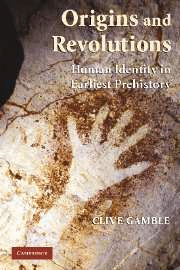Egypt
 Nature
Nature
- Book Review: Deadly Powers: Animal Predators And The Mythic Imagination
Bryn Mawr Classical Review (Review by Reyes Bertolín Cebrián) Paul A. Trout, Deadly Powers: Animal Predators and the Mythic Imagination. Amherst, NY: Prometheus Books, 2011. Pp. 325. ISBN 9781616145019. Trout’s book presents...
- Book Review: Archaeology - The Conceptual Challenge
The Prehistoric Society (Review by David Mullin) Of potential interest to anyone interested in prehistory: This short book asks a series of timely questions about the nature of archaeological enquiry; the place of humans in the natural world; the nature...
- Renfrew On Dna And Looting
Scotsman (Susan Mansfield) The link here to Egypt is a bit tenuous, but it is an interesting piece which does reference the Egyptian civilization so I have included it: FEW of us realise we carry around in our bodies the seeds of our most distant past....
- Book Reviews: Impacts Of Climate On Ancient Civilizations
http://www.geotimes.org/current/geomedia.html#review2Book review of The Winds of Change by Eugene Linden. Long term visitors will know that I am interested in past climate change, and its impacts (or otherwise) on human occupation patterns. The above...
- Book: Ancient Egypts - Foundations Of A Civilization
www.personed.co.uk The following brief notes do not comprise a review of the above book by Douglas J. Brewer, because I only found it in the Waterstones bookshop around the corner from UCL yesterday, and haven't done more than skim it, so this is...
Egypt
Book review: Origins and Revolutions: Human Identity in Earliest Prehistory
 Nature
NatureThis is a slow news day gap filler. It has nothing directly to do with Egyptology, but it might be useful for anyone interested in prehistory, so I have slotted in a mention of this book review printed in Nature.
Robert N. Proctor reviews Origins and Revolutions: Human Identity in Earliest Prehistory by Clive Gamble. In Origins and Revolutions: Human Identity in Earliest Prehistory, Clive Gamble questions two widely accepted theories. First, the idea that a 'human revolution' took place around 50,000 years ago, with a genetic change associated with the appearance of art, music and language. And second, the notion of an economic and social revolution in the Neolithic period. Instead, Gamble envisages a long haul, with human invention growing at a steady pace.
Unfortunately, the review is not available online, but anyone interested in pursing this book will be able to find the book on Amazon UK, which not only shows a synopsis, but also allows you to view the first few pages, including the Contents list, the first six pages of Chapter 1 and the index.
Egypt has produced extensive prehistoric artefacts from the Lower Palaeolithic onwards, and there is a lot of surviving rock and cave art (for which the dates are largely speculative) although so far no human remains associated with either Lower or Middle Palaeolithic artefacts.
- Book Review: Deadly Powers: Animal Predators And The Mythic Imagination
Bryn Mawr Classical Review (Review by Reyes Bertolín Cebrián) Paul A. Trout, Deadly Powers: Animal Predators and the Mythic Imagination. Amherst, NY: Prometheus Books, 2011. Pp. 325. ISBN 9781616145019. Trout’s book presents...
- Book Review: Archaeology - The Conceptual Challenge
The Prehistoric Society (Review by David Mullin) Of potential interest to anyone interested in prehistory: This short book asks a series of timely questions about the nature of archaeological enquiry; the place of humans in the natural world; the nature...
- Renfrew On Dna And Looting
Scotsman (Susan Mansfield) The link here to Egypt is a bit tenuous, but it is an interesting piece which does reference the Egyptian civilization so I have included it: FEW of us realise we carry around in our bodies the seeds of our most distant past....
- Book Reviews: Impacts Of Climate On Ancient Civilizations
http://www.geotimes.org/current/geomedia.html#review2Book review of The Winds of Change by Eugene Linden. Long term visitors will know that I am interested in past climate change, and its impacts (or otherwise) on human occupation patterns. The above...
- Book: Ancient Egypts - Foundations Of A Civilization
www.personed.co.uk The following brief notes do not comprise a review of the above book by Douglas J. Brewer, because I only found it in the Waterstones bookshop around the corner from UCL yesterday, and haven't done more than skim it, so this is...
